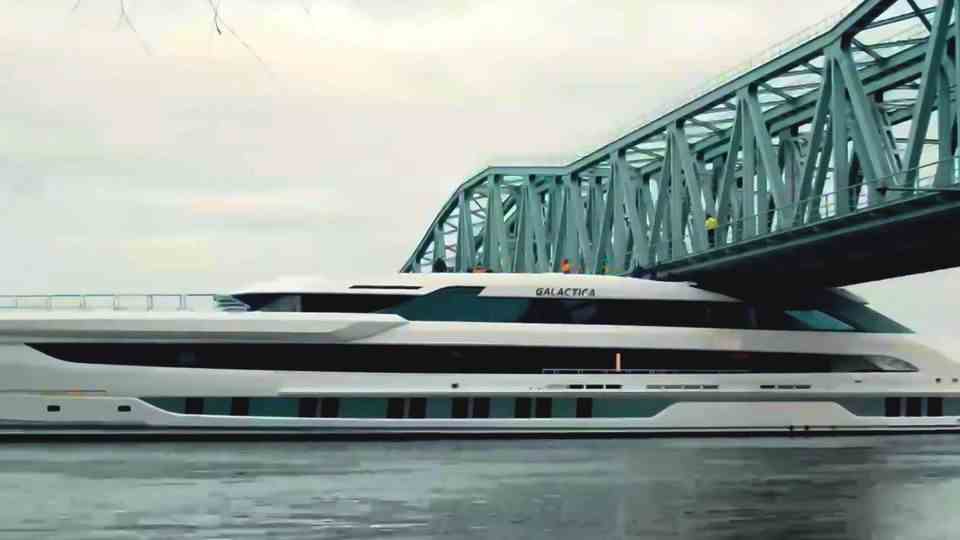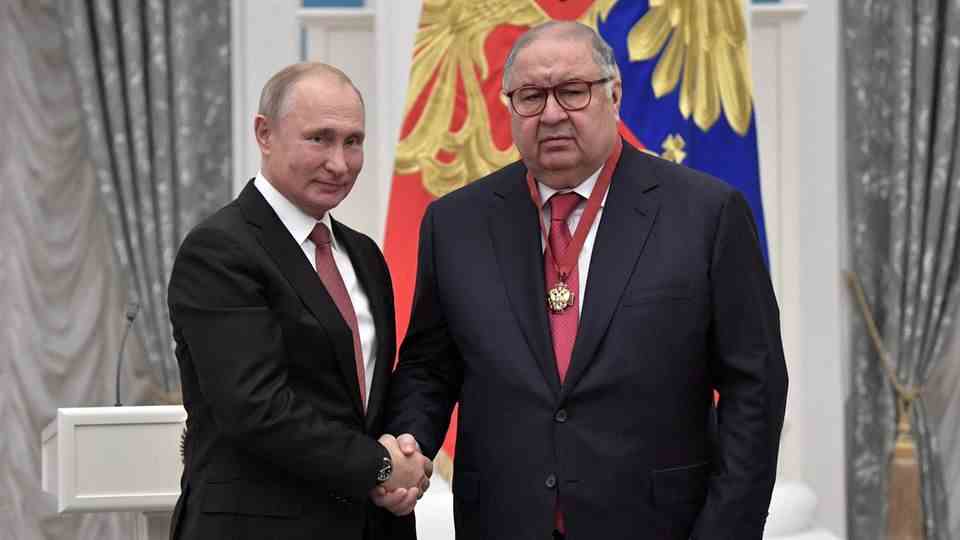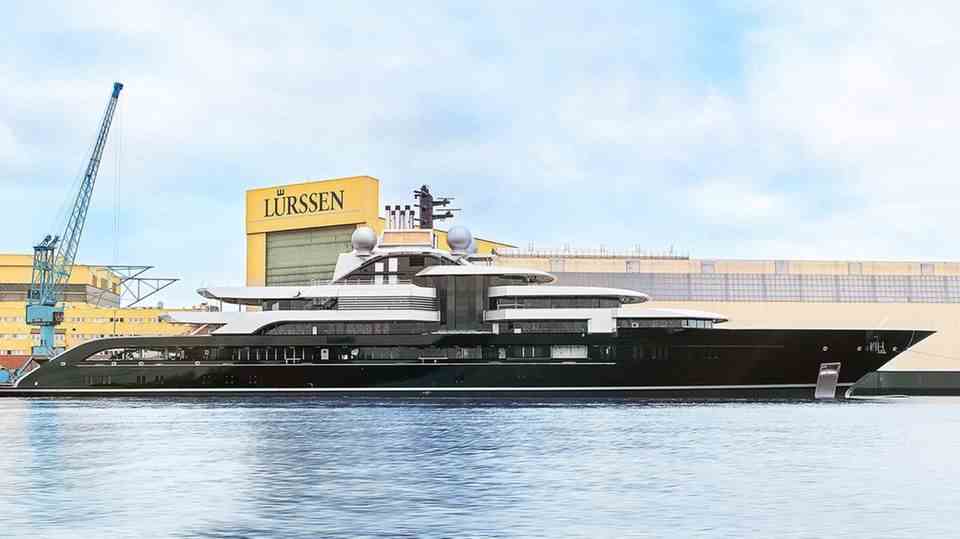Italy is a world champion when it comes to freezing the assets of sanctioned oligarchs. But maintaining the objects tears a hole in the state coffers. The country is therefore now examining whether the yachts, villas and luxury cars can be sold or at least rented out.
The world’s largest sailing yacht “SY A” owned by the Russian oligarch Andrei Melnitschenko has been in the dry dock of the largest European shipbuilding company Fincantieri in Trieste for a good two months. Elsewhere, too, for example in Hamburg, Tarragona in Spain, La Ciotat in France or on Mallorca, huge ships are anchored unused in the ports. They are all frozen by the authorities and are not allowed to leave their berths. And it’s becoming an expensive problem.
Shortly after the Russian invasion of Ukraine, numerous countries began freezing the assets of Russian oligarchs who had ended up on sanctions lists because of their close ties to the Russian government. Unlike confiscation or expropriation, current EU regulations stipulate that after the war, the riches should be returned to their owners subject to conditions. This includes that the ships, cars or villas remain in perfect condition.
Don’t use it, but clean it
But if you think that what doesn’t drive doesn’t cost anything, you’re wrong. According to Italian media reports, the sailing yacht “SY A” alone costs between 20,000 and 30,000 euros every day. These costs are made up of mooring fees, water, electricity, wages and maintenance to keep the yacht from deteriorating. There have already been similar reports about the “Dilbar” (IMO 9661792), which is currently on the pocket of the German Blohm+Voss shipyard and costs “five-digit amounts” every day (find out more here).
Each country currently has different rules as to who pays for the costs incurred. Germany lets the shipyards sit on the costs, ports and shipbuilders in France and Spain also write heaps of invoices, hoping that the costs incurred will be settled upon collection. Italy, the country with the most frozen assets, initially bore the costs itself and handed over the administration to a publicly appointed trustee.
And although Italy has assets totaling 953 million euros, holding on turns out to be a big loss. As the “FAZ” reports, the responsible Agenzia del Demanio has now contacted the government. Rules and ways of dealing with the assets of Russian billionaires are needed, they say.
rules insufficient
The best thing would be to reactivate the proven mafia rules, which would allow the authorities to sell fixed goods and thus cover costs and compensate victims. The Italians know and can do that. But: For this, the country would have to be able to confiscate the yachts, villas and cars in a legally watertight manner, which is currently not provided for under the EU’s sanctions regulations.
As long as the “freezing” remains, which was apparently completely unknown in Italy up to now, according to local lawyers, they apparently want to at least check whether renting would be an option in order to generate income and thus cover the costs. How and whether the legal situation can be adapted is currently completely open. A spokesman for the “FAZ” described the situation as “legally precarious”.

Until everything is clarified, costs for the tax fund continue to arise every day. For example, the villas of the Russian TV presenter Vladimir Rudolfovich Solovyov on Lake Como in Italy were daubed with paint and experimentally set on fire. Since both villas are frozen but not confiscated, the authorities have no choice but to repair the damage at their own expense.
The USA also want to find a solution
Due to the delicate situation, the USA is also trying to find ways to do something useful with the treasures of the oligarchs. According to the New York Times, the House of Representatives has passed a bill requiring President Biden to sell the frozen luxury assets and use the funds for additional military and humanitarian aid to Ukraine. But even overseas, there is uncertainty as to whether the request can be legally complied with.
What happens when the original owners are no longer sanctioned and subsequently sue for reimbursement is completely open. In the worst case, the country concerned would have to bear the costs and, on top of that, would have to pay for compensation. In the USA, at least, there seems to be a lot of motivation to take out adequate insurance. Jake Sullivan, Biden’s national security adviser, recently said, “When we seize these assets, our goal is not to return them; our goal is to put them to better use.”
Which adjustments are to be expected in the EU – or at least at the state level, is currently completely open. The fact is that the longer the war, and with it the sanctions, lasts, the heavier the assets of Russian oligarchs weigh on their minders. Most recently, Poland called on the EU to change the rules and create new ways to monetize frozen assets. Following the American example, also to support Ukraine financially in the reconstruction of the country. Pawel Jablonski, Poland’s deputy foreign minister, told the Financial Times: “The most important principle is that Russia started this war and therefore has to pay for it.”
Sources: FAZ, New York Times, La Republica, Financial Times



